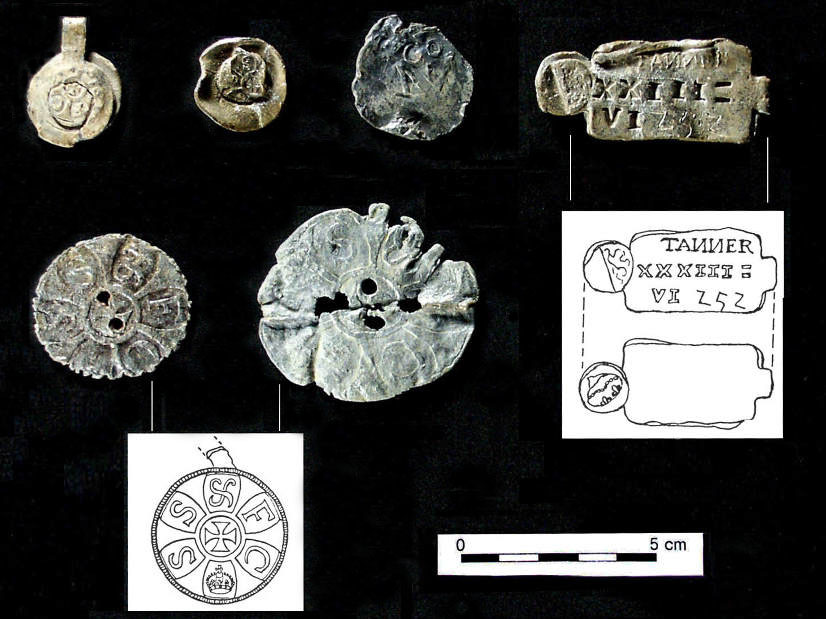
 |
| Baling seals, typically used to tag and seal bundles of materials such as cloth, hides, and blankets, often intended for trade with the Indians. Most of the seals were made of sheet lead, which was impressed with an identifying mark (see enlarged drawings). The two seals in the middle row were apparently re-made into buttons (note small holes in center of each) after the bales they sealed were broken open. The country of origin of these seals is not known. The seal at top right appears to be inscribed with two fleur-di-lis symbols and the French word, TANNER, which means to tan hides. The numeral 252 also is scratched next to the Roman numerals XXIII-VI. This type of seal was common in the fur trade, and indicates the bale contains 252 hides to be tanned. Photo by Susan Dial; drawings and interpretation from Gilmore 1973: Fig. 26. TARL Collections. |